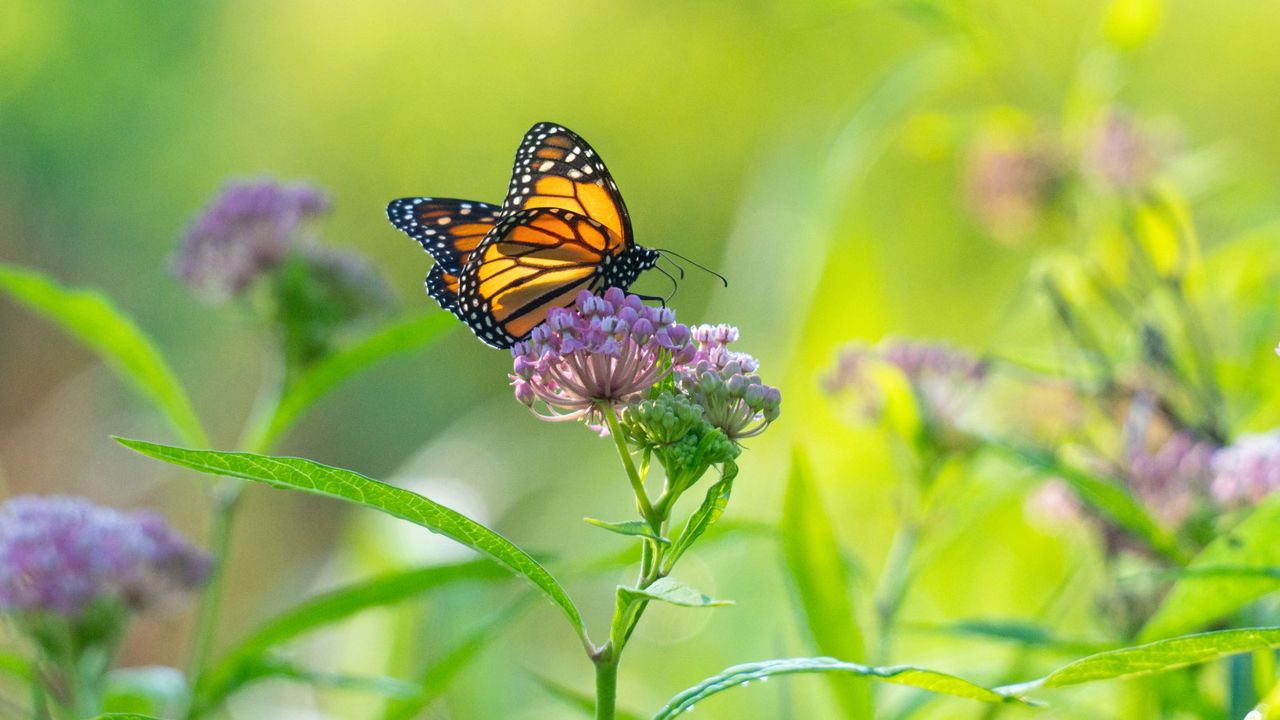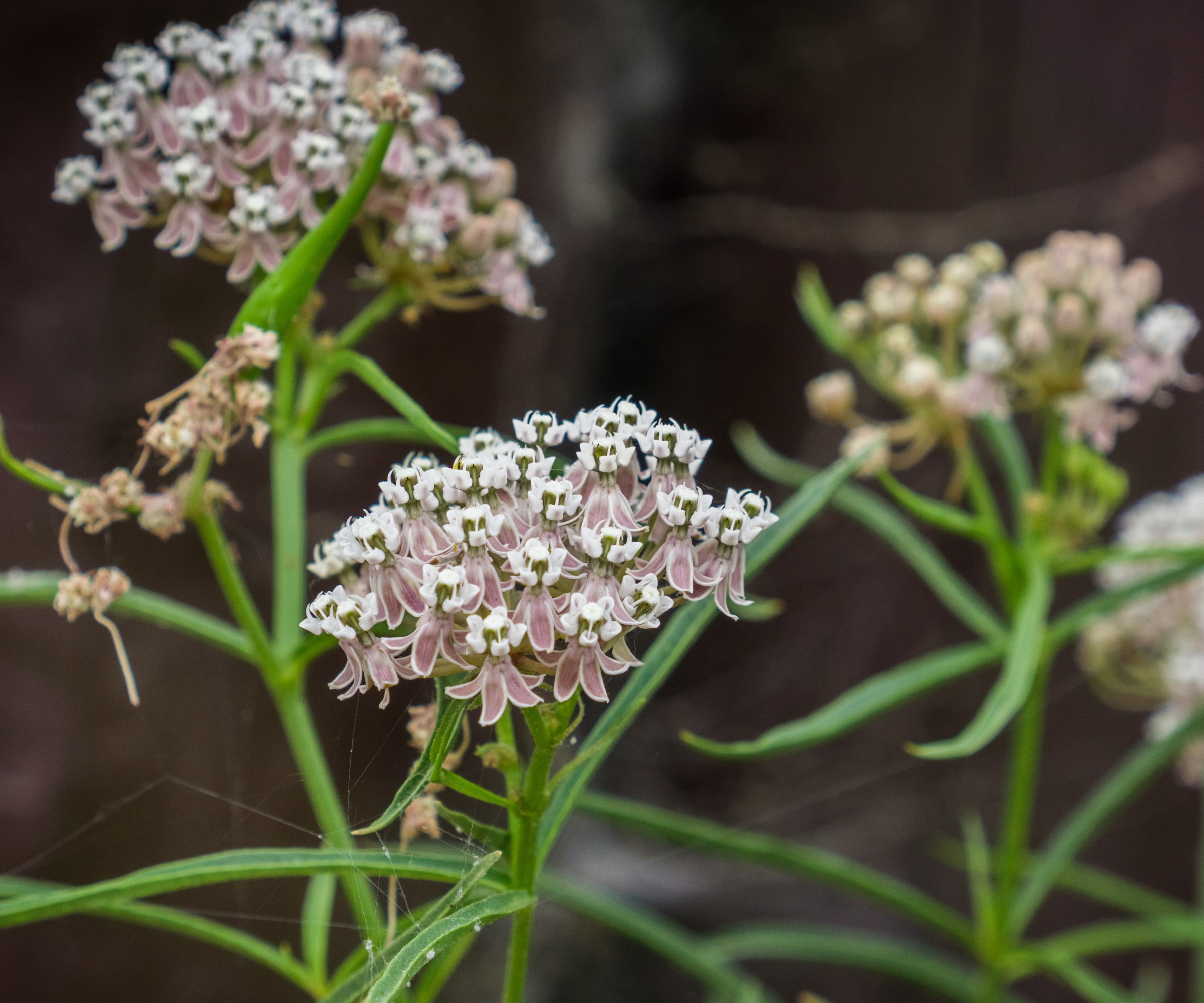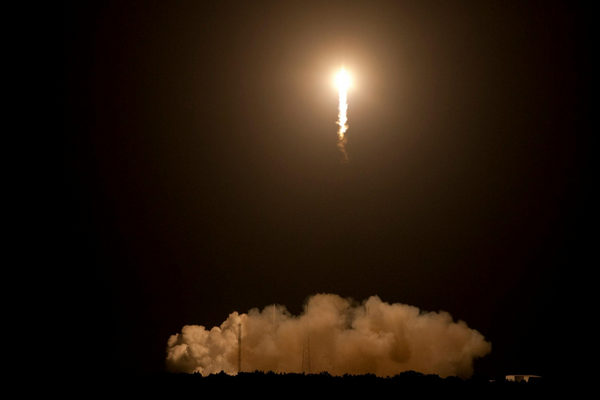
Milkweed is famed for being an important plant for the Monarch butterfly, and it may surprise you to know that late fall is an ideal time to start perennial varieties by sowing outdoors. It does work and is a quick and easy job to attract pollinators to your garden for years to come.
As the temperatures drop and the first light frosts arrive, it might not sound like the ideal time to start growing milkweed. However, there is method in this perceived madness. As sowing in the fall mimics nature and removes one hurdle you need to overcome when planting milkweed seeds in the spring.
If you are tempted to plant milkweed seeds in the fall, this guide reveals the best varieties to sow this season, along with four super-simple sowing steps to follow. It won't take up much of your time this fall, and the results will make it all worthwhile. You'll get bright blooms that support butterflies, as well as bees, hummingbirds, and other beneficial insects.

Can you plant milkweed in the fall?
Yes, you can plant many varieties of milkweed seeds in the fall. It is a great way to grow a fantastic plant for pollinators, especially with milkweed being the only host plant for Monarch butterflies.
Their population has declined hugely over the last 20 years, making it an important time for more gardeners to consider growing milkweed for Monarch butterflies.
As fall is an ideal time to plant milkweed seeds for plants to bolster your wildlife garden next year, why not add this simple task to your fall gardening checklist and let nature do its course?
Why you should plant milkweed seeds in fall

Milkweed seeds require a period of cold stratification to exit dormancy and sprout. While many gardeners replicate nature by stratifying seeds in a refrigerator in spring when sowing seeds indoors, the beauty of planting milkweed seeds in the fall is that you can stratify the seeds naturally.
Sowing in the fall lets nature do the work for you. This is far easier than artificially mimicking nature by having seeds in a container taking up space in your refrigerator for 30 days or more (potentially up to 60 days for the best results from some varieties).
In mid-to-late fall, the soil will be cold enough to stop the seeds from germinating without the ground being frozen – this is the perfect time to sow. When planning an ideal window for planting milkweed seeds in the fall, aim for just after the first light fall frosts.
This likely means sowing seeds outdoors in mid-October for zone 5, late October for zone 6, early November for zone 7, mid-November for zone 8, and as late as early December for zone 9. Keep an eye on the local forecasts, so you sow the seeds before the first ground frosts.
However, it is not a one-size-fits-all approach for all milkweed. Not all varieties of milkweed require stratification. It is advisable to check seed packets for information on whether they need it.
If you have harvested milkweed seeds from existing plants, the typical perennial varieties that need cold stratification include common milkweed, swamp milkweed, whorled milkweed, butterfly weed, and showy milkweed. Tropical milkweed and other annual varieties do not need it.
How to plant milkweed seeds in fall – 4 simple steps

The best way to plant milkweed seeds in fall is outdoors, directly into their desired growing position.
You can sow them in pots, with a view to transplanting seedlings outdoors after they have sprouted in the spring. However, you do need to ensure the pots have drainage holes to prevent waterlogging and are protected throughout winter and spring to stop them blowing over or getting damaged.
Planting milkweed seeds outdoors in the fall can be done in the following simple steps:
- Pick a sunny spot in your yard with well-draining soil. It can be in flower beds, mixed borders, or dedicated wildflower meadows. Clear the area of weeds, debris, and large stones, and rake the soil level before sowing.
- Water the ground if it is dry before sowing, and let the water soak into the soil.
- Scatter the milkweed seeds over the surface and gently rake them over to work them into the soil.
- Cover the seeds with a thin layer of more soil or compost. Then add an inch or two of mulch, such as straw or chopped up leaves.
The seeds will quietly sit there over the winter and begin to sprout once the soil temperatures warm in the spring. Milkweed seeds tend to germinate once the soil reaches 65°F to 75°F, which you can check in spring with a soil thermometer.
The milkweed seedlings will likely need to be thinned out once they appear in spring, starting at six inches but ultimately to around 18 inches apart, so plants can reach their full size.
The exact spacing required can depend on the type of milkweed, but it is better to start small and increase over time. You can always dig up plants and move them elsewhere in your yard.
Shop milkweed seeds for fall planting
This collection includes packets of showy milkweed, pink swamp milkweed, white swamp milkweed, orange butterfly milkweed, and common milkweed seeds.
This collection contains non-GMO, heirloom-quality seed packets for growing butterfly milkweed, common milkweed, showy milkweed, and swamp milkweed.
These showy milkweed seeds will develop into plants with fragrant pinkish-white to pinkish-purple blooms that will attract lots of pollinators in spring and summer.
There are many other flowers you can sow in the fall, too, as you take advantage of cold snaps sparking the seeds into life come the spring. For lots of inspiration, our guide to the best flowers to sow in the fall reveals 16 seeds to plant during the season for a bounty of blooms the following year.







